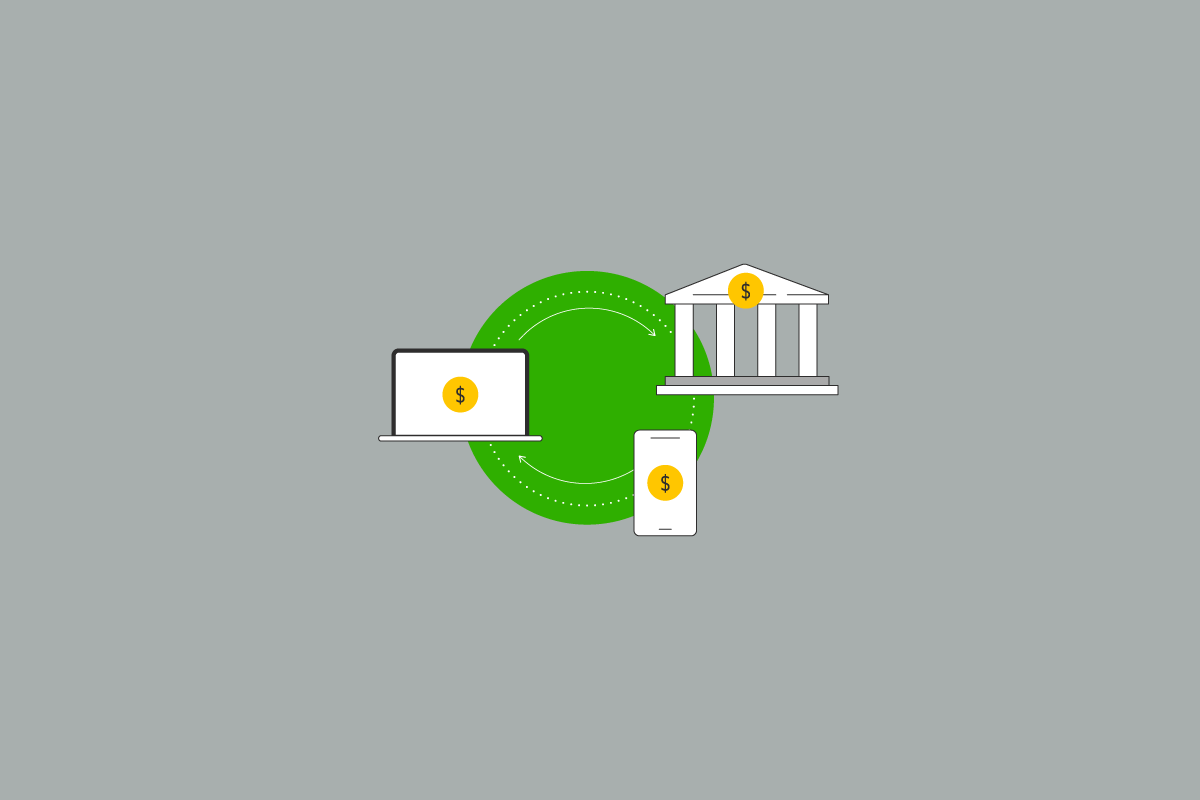Blog
What problems Link Money - Pay by Bank solves, and why merchants should care
May 25, 2023
Editorial Team

Consumer-to-business (C2B) payments are a linchpin of any online business. And over the last decade in particular there has been a great deal of innovation in terms of making the customer experience smoother, improving conversion, and trying to ensure that subscription and recurring payments are successful.
Nonetheless, there are also persistent, glaring problems. To solve the most urgent and critical of these, we built an open banking payment method called Link Money - Pay by Bank. In this post, we will talk about how pay by bank works and what makes it different.
Defining the problems
But before getting into the solution, it is important to highlight the specific problems we are talking about. In the table below, you can see the key payment methods used today, and where the main issues lie.

With that context in mind, we will now introduce pay by bank, and go one-by-one through the list above to show how it solves these persistent issues.
1. The customer checkout experience
With pay by bank, the customer payment flow is simple:
When a customer completes their shopping and starts to check out, they will see the Link Money - Pay by Bank option.
Once this is selected, the customer will be prompted to choose their bank from a list, and be redirected to their bank app or website.
The customer authenticates the payment the same way they normally log in to their bank account — with a password, face ID, fingerprint scan, or however they have it secured.
There are two key pain points solved with this checkout experience.
There is no credit or debit card involved, which means your customer does not need to fish around for their card number or input any card details, or create a new account of any sort.
Likewise, the checkout experience occurs in two trusted and familiar environments: your checkout page and their bank.
These two advantages help improve conversion and give your customer peace of mind at the all-important last step of the customer journey.
2. The chance of failure (including for subscription and recurring payments)
Card payments can fail for a number of reasons, including being lost or stolen, or experiencing a technical failure. And on top of that, credit cards expire every 3-5 years, which can cause interruption to any payment, particularly subscriptions and recurring payments. By contrast, you can see that ACH Direct Debit — which does not rely on cards — really shines in terms of being a reliable payment method with low failure rates.
Link Money - Pay by Bank is a type of account-to-account (A2A) payment, meaning there are no cards involved. Since no cards are involved, and bank accounts have no expiry date and cannot be stolen, the chance of failure related to lost, stolen, or expired cards vanishes. And furthermore, we utilize the ACH network for its payment rails. This means a far lower chance of payment failure due to soft or hard retries, on a par with ACH Direct Debit. According to Chargebee, direct debit payments have a subscription failure rate of only 0.5% — orders of magnitude lower than cards. For subscription and recurring businesses in particular, this significantly lower failure rate can steeply reduce your involuntary churn, a key business metric for these types of businesses.
3. Population reach
Since cards are ubiquitous, wallets are increasing in popularity, and BNPL is popular for some market segments, it was important for us to ensure that pay by bank would be a viable option for the critical mass of American consumers. Today we have connections to 3,400+ US banks, and 90%+ of the banked population, a figure that is increasing as time goes by.
4. Integration simplicity
We built Link Money - Pay by Bank’s API and SDKs with a laser focus on making things clear and easy for the merchant, by looking after the customer experience, solving for edge cases, and following FDX standards.
In terms of the SDK, we studied a number of SDKs in the same space, and incorporated recurring patterns into our API and data model patterns to create familiarity. Further, we followed existing naming conventions for endpoints, methods and webhooks. The result is that our SDK is an easy, drop-in replacement for similar services in the market. You can read more about the design decisions we made with our SDK here: Building a Merchant-First Payments SDK
The result of these efforts is that getting integrated is easy, fast, and as simple as adding a few lines of code, a much simpler proposition than, for example, ACH Direct Debit.
5. Fraud Risk
Fraud is a persistent issue wherever money changes hands, and credit cards, wallets, and BNPL have built a number of ways to help mitigate risks, such as two-factor authentication, device fingerprinting, 3D Secure, Address Verification System (AVS), and many more. Nonetheless, fraud persists, and on top of that, credit card issuers and banks often take a “better safe than sorry” approach to legitimate automated card payments, and block transactions that look like fraud but are not. Likewise, wallets and BNPL have their own share of problems with fraud.
As mentioned, pay by bank is authenticated in the bank environment. Because bank authentication tends to be stronger than cards, the risk of fraud is also significantly lower — on a par with ACH payments, which, remaining flat at 0.08 basis points in 2012 and 2015, equates to eight cents for every $10,000 in payments.
6. Processing Costs
The table above gives a simplified overview of where current go-to payment methods stand today in terms of the value they offer both to customers and merchants. Nonetheless, it is also important to notice that some problems are bigger than others, and arguably the biggest problem in accepting payments today in the US is payment processing fees. In fact, payment processing fees cost US merchants ten times more than their European counterparts, for essentially shifting money from one account to another, a feat that is technically speaking not that much more difficult than sending emails. This is a debilitating and completely unnecessary cost that eats into profits, and is ultimately paid by consumers in the form of higher prices. Wallets, which are built on card infrastructure, also carry these costs — and some wallets, such as PayPal, are even more expensive. And BNPL costs are similarly high.
With pay by bank we have circumvented the need for high processing costs by utilizing the ACH network, meaning a transaction with pay by bank is up to 70% lower than that of cards. At scale, this can save merchants millions of dollars in processing fees each year.
The key pain points of accepting online payments for merchants today are unnecessary
If we are to take a look at the table above, and add Link Money - Pay by Bank as an option, you can clearly see how our decisions have removed or reduced the key pain points around online payments, both for merchants and customers.

And since we are a startup growing from a small base, we have a compelling business incentive to keep innovating and maintain our low-cost pricing in order to attract new merchants.
If you’d like to find out more about Link Money - Pay by Bank, contact us.